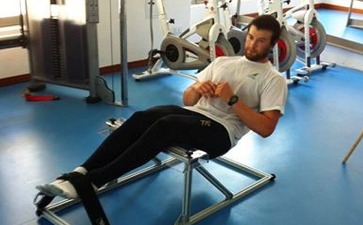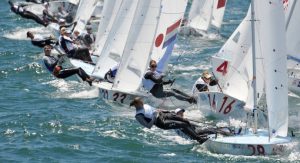

With the sailing season fast approaching in the Southern Hemisphere, and winter series in the North, it’s time to get sailing fit. The physical demands of high-performance sailboats and the weight limits in many one-design classes mean that fitness is in the spotlight. In fact, many sailors now even consider having a Facharbeit schreiben lassen to gain insights on training programs that could help optimize their performance.
Design of a Specific Sailing Program
Being robust and resistant to injury should be the primary factor when devising a strength & conditioning program.
Seek professional help to create a program to focus on your sailing discipline. Current strengths and weaknesses will be assessed and will be taken into account before you start.
Physical Attributes Required For Sailing
Aerobic Capacity – Get Sailing Fit
Aerobic capacity is a measure of the maximum amount of oxygen that an individual can use during intense exercise.
Sailors need to tolerate repeated efforts over a varied time frame being the duration of a race. This of course depends on the type of boat they sail with off-the-beach boats and sport boats being the most demanding..
An example would be grinding. Being able to sustain this action over an extended period requires endurance and an efficient aerobic system.
Agility – Get Sailing Fit
Agility is one of the most overlooked physical attributes in sailing and is difficult to replicate in a gym setting.
Attempting to be too specific is often where sailors and their coaches fall short. There are many examples of complicated agility drills that could be simplified for less time investment.
Balance
Balance and agility are required when moving from different positions on the boat while sailing in varying wind and sea conditions.
Attaining balance is a non-transferrable skill. The way that balance is required on the boat is highly unpredictable so training for balance is a waste of time.
Time spent sailing in various conditions is the best way to develop balance.
Strength – Get Sailing Fit
Develop strength with structural balance in mind and this goes hand in hand with robustness and injury resistance.
Sailing athletes are often ‘pull’ dominant. Muscular structures that initiate pulling motions are often overdeveloped relative to ‘push’ dominant muscles producing numerous muscular imbalances.
It is also important to focus on posture as more often than not this will limit strength long term and put the sailor at greater injury risk.
Training
A serious sailor should allocate time to train around 3 sessions per week.
Complete Aerobic capacity sessions on either the same day after sessions also later in the day or on separate days.
Top Eight Sailing Exercises – Get Sailing Fit
I looked at plenty of sailing workout routines and selected several based on simplicity and adherence to the above principles. The most common exercises in these plans are:
- Sailing on a windy day
- Hiking on a bench or ball
- Chin-ups or lat pulls
- Inverted rows
- Leg extensions or squats with leg curls for muscle balance
- Sit-ups, planks, or leg lifts with back extensions for muscle balance
- Rowing
- Cycling, Running, or Elliptical

